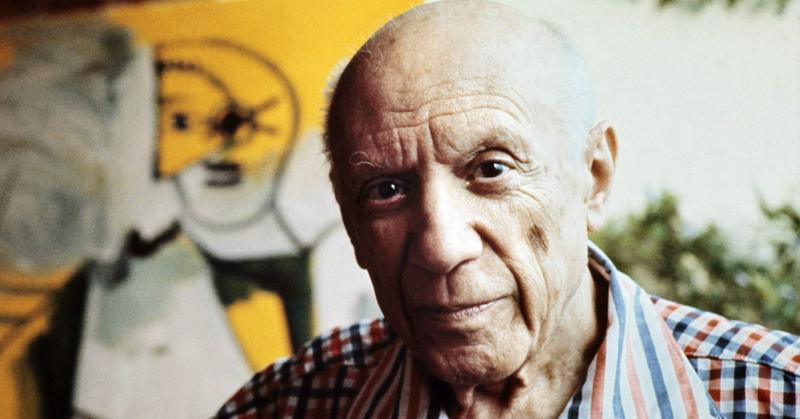Pablo Picasso: Everything You Didn't Know About The Avant-Garde Artist
By | October 23, 2020

As the father of cubism, Pablo Picasso was easily the most influential artist of the 20th century and perhaps the greatest. During his lifetime, Picasso's genius touched almost every artistic medium, from ceramics and sculpture to painting and even stage design.

Pablo Picasso's Early Life
When Picasso was born on October 25, 1881, in Malaga, Spain, he was given the name Pablo Diego Jose Francisco de Paula Juan Nepomuceno Crispin Crispiniano Maria Remedios de la Santisima Trinidad Ruiz Picasso, but since that signature wouldn't fit on a check, he was simply called Pablo Picasso. He came by his artistic ability honestly: His father, Jose Ruiz Blasco, was an art professor. Both his father and his mother, Maria Picasso Lopez, encouraged Picasso's fondness for drawing and artistic endeavors. In fact, according to legend, young Picasso's first word as an infant was piz, the Spanish word for "pencil."
By the time Picasso was 10 years old, his talent was so evident that the whole family moved so the lad could enroll in classes at the school where his father taught. Pablo, however, was not a stellar student. He was often sent to detention, but he was allowed to take his sketchbook with him, so he relished the quiet time to work alone. Within a few years, Blasco put his own career on hold to focus on his son's talents, supplying his son with models to sketch and even sponsoring his first exhibition.
In 1895, Picasso and his family moved to Barcelona, where the teenage artist made a splash in the artistic community. The next natural move was to Madrid, the capital of Spain. In 1897, he enrolled in the Royal Academy of San Fernando, but he once again felt stifled by the strict rules of academia. Instead of going to class, he hung out in the city's brothels and wandered its great museums. Once he made the decision to drop out of school, he set his sights on Paris.

Picasso's Periods
In 1901, when Picasso was once again living in Spain, one of his best friends, Carles Casagemas, shot and killed his ex-girlfriend before turning the gun on himself. The loss of his friend and accompanying guilt sent Picasso into a depression, and the art he produced at the time, which art historians now refer to as Picasso's "Blue Period," illustrated new depths of melancholy from the artist.
He soon decided a change of scenery might help, so he moved back to Paris in 1904. The move did indeed bolster his spirits, and art historians note a corresponding difference in the work he produced shortly after, called the Rose Period. These pieces seem to reflect a newfound attitude and personal peace.
Picasso and his good friend, Georges Braque, began experimenting with a new style of painting around 1908 characterized by geometric shapes and interlocking patterns, which became known as cubism. It was a fresh and innovative style of art that required the viewer to see the piece through an introspective lens. Picasso later claimed that his mistress at the time, depicted in several of his paintings, inspired the style.

Did Picasso Steal The Mona Lisa?
When the Mona Lisa was stolen from the Louvre in Paris on August 21, 1911, Picasso was one of the suspects called in for questioning. Picasso's own friend, poet Guillaume Apollinaire, implicated Picasso in the crime, but when the two men were brought before the magistrate, Picasso claimed he had never seen Apollinaire before. After extensive questioning, Picasso was released and never charged with the theft, and a few years later, an Italian national named Vincenzo Peruggia was caught trying to sell the painting. He was arrested, and the Mona Lisa was returned to the museum, but some still believe that Picasso may have been involved in the theft.

Beyond Paint
Although he's most famous for painting, Picasso expressed himself through a wide variety of media. Perhaps inspired by his circle of artsy friends in Paris, he dabbled in poetry and even once declared that the world would remember him more for his poems than for his artwork. He also tried his hand at theater during World War I, when some of his friends decided to stage a theatrical event called Parade and called on Picasso to design and paint the sets for the show. In the 1920s and '30s, Picasso produced a collection of sculptures that remained in his personal collection until after his death.

Picasso's Personal Life
Ever since his teen years spent in the brothels of Barcelona, Picasso loved women, and age didn't slow him down. He was married twice—first to Olga Khokhlova in 1918 and then to Jacqueline Roque in 1961, when he was 79 and she was in her mid-twenties—and fathered four children by three different women.
Pablo Picasso enjoyed a long life that ended on April 8, 1973 at age 91 in France. He left behind an enormous volume of work, but more importantly, he left his mark on them and became an icon of art, pop culture, and style.

